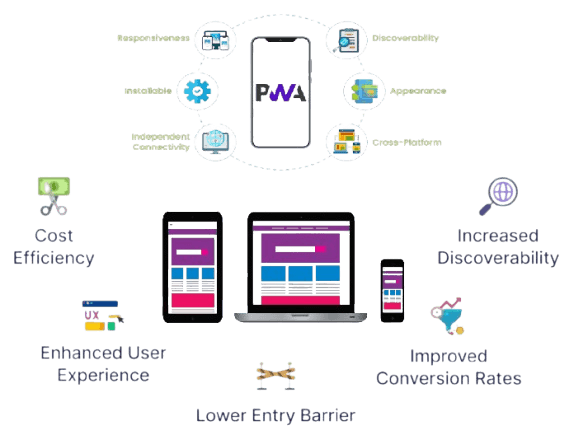


By Shainjal Software Solutions • Last updated:
Everyone can "make" a website today — but only a strategic, optimized, and integrated website functions as an appreciating business asset. This guide explains exactly what your website must do — technically, commercially and strategically — so your business thrives long-term.
A You’ve probably heard: “I can build a site myself — why pay?” or “AI can replace web developers.” That’s technically true for basic pages, but that’s not the point. A website is not merely pages and colors. A true business asset is a platform that accumulates value: organic traffic, backlinks, trust signals, customer data, and brand recognition. When entrepreneurs treat websites as disposable marketing collateral instead of strategic assets, they waste money, time, and often the entire business.
An asset produces value over time. Properties that qualify as assets are owned, scalable, measurable and appreciate with investment. Your website can be that asset when it is:
A PWA bridges the gap between websites and native apps. For many businesses, a PWA is the quickest way to deliver app-like engagement without app-store distribution.
PWA = better retention + better conversions + improved user experience.

A Google measures site experience with Core Web Vitals — a set of metrics focused on user-centric performance:
Passing Core Web Vitals improves search visibility and reduces bounce rates. Fast, stable pages convert better — especially on mobile where most customers live.
A compromised website destroys trust and ranking. Regular security checks and best practices are non-negotiable:
Pro tip: configure monitoring and alerts for suspicious activity and maintain an incident plan.
Modern websites are entry points to an ecosystem. Use well-designed APIs to connect mobile apps, marketplaces, CRM, analytics and third-party services. This reduces duplication, improves data quality and enables smarter automation — a must for scale.
Mobile-first design is essential. Responsive sites adapt to screen sizes and devices, delivering consistent experience across phones, tablets and desktops. A responsive site is not optional — it’s a baseline for any business targeting a global market.
Fast loading pages and scalable backend architecture protect conversion rates during traffic spikes (launches, campaigns, viral moments). Use CDNs, efficient caching, horizontal scaling and optimized images to maintain performance as you grow.
Empirical data shows page speed correlates strongly with bounce rate and conversion. Every 100ms improvement can increase retention and revenue over time. Optimize images, defer non-critical JavaScript, and use server-side rendering or caching strategies to boost perceived speed.
PWAs are fully indexable when implemented correctly. Combined with localized SEO and rich structured data, a PWA can be discovered via search, social links, and direct installs — delivering omnichannel reach. Whether a customer clicks from social, an external link, or Google, a PWA provides consistent experience and re-engagement mechanisms.
Result: broader visibility + better retention = higher lifetime value (LTV).
Structured data (FAQ, HowTo, Product, VideoObject) helps Google display rich results (snippets, carousels, video thumbnails). Use the Rich Results Test to validate markup and increase click-through rate.
Result: broader visibility + better retention = higher lifetime value (LTV).
Test your pages here: Google Rich Results Test
Domain Authority is an external metric (by various tools) that reflects your site's backlink profile and perceived trust. Improve DA by:
Higher DA typically correlates with easier ranking for competitive terms — but always pair backlinks with quality content and technical excellence.
Reviews and customer stories are trust signals. Display them prominently, mark them up with structured data, and encourage verified reviews on platforms and on your site. Case studies show real outcomes — the fastest way to convert cautious buyers into customers.
Your website helps Google understand your business location, services, and trust signals. Quality content, NAP consistency (Name, Address, Phone), and reviews feed into Google My Business signals — improving discoverability for local intent.
Common patterns for failure:
Short-term traffic buys visibility, but organic assets create sustainable business value.
Run this quick checklist — if most answers are "No", you have work to do.
Tools to validate: Google PageSpeed Insights, Rich Results Test, Search Console, and your preferred site-audit tool.
AI tools speed up production but don’t replace the strategy: architecture, integrations, performance engineering, outreach and continuous optimization that make a site an asset.
Begin with an audit: Core Web Vitals, security, SEO, content quality, review collection, and integrations. Then prioritize fixes that directly impact visibility and conversion.
For businesses prioritizing retention, frequent repeat usage or heavy mobile traffic (commerce, services, news), PWA offers measurable engagement benefits.
sales@shainjalsoftwaresolutions.com
info@shainjalsoftwaresolutions.com
A-980, GF, Sector MU 2, Greater Noida, Uttar Pradesh 201310, INDIA.